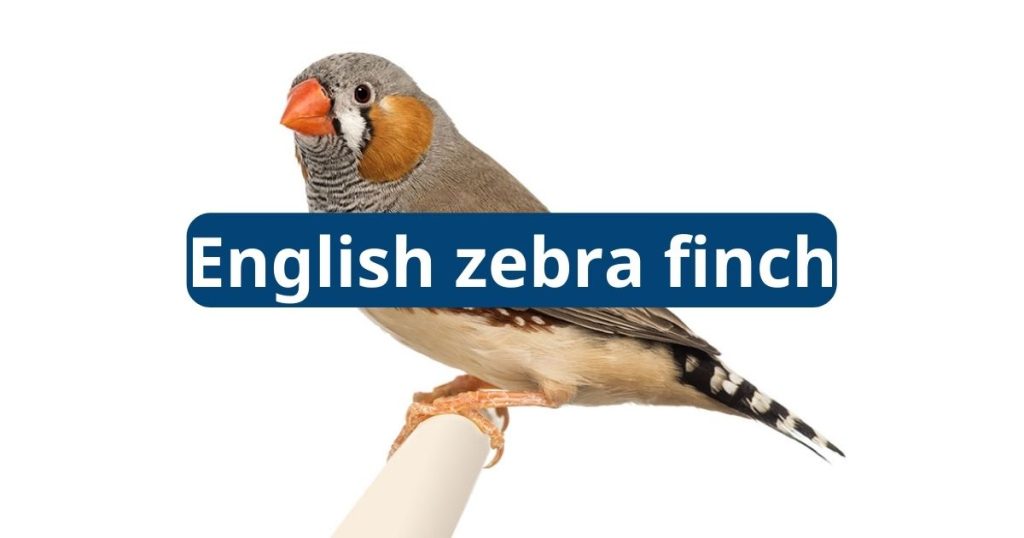English Zebra Finch

Zebra finches are monogamous by nature and mate for life. They breed throughout the year and nest in thorny shrubs and trees, as well as in ledges of buildings. The birds have modest dietary needs and do fine with commercial finch mixes, drinking water, a cuttlebone and some grit. They also enjoy a variety of seeds, fruits and vegetables.
Size
A small bird, a male zebra finch typically weighs less than an ounce. These little birds get their name from the zebra-like stripes that mark their cheeks and chest. Males are also able to be distinguished by their mustache markings, and a bolder black-and-white tail stripe. Females have a dull gray color and lack the chest barring and bright orange cheeks that make it easy to tell them apart from males.
Zebra finches are monogamous and will form a pair bond for life. They are quiet birds, emitting chirps and peeps to communicate. They often imitate the songs of their parents and other birds they hear in their environment, improvising with whistles and trills to create a unique song.
These birds prefer a large cage with horizontal bars and a spacious perch. They also need a place to sleep, and will benefit from a nest box, although wild zebra finches will often use disused bird nests, bushes or rabbit burrows for roosting.

Habitat
In the wild, zebra finches live in open grasslands with scattered trees and shrubs. They are also accustomed to living in areas with heavy rains and often breed opportunistically when the conditions are right.
Captive zebra finches have been known to breed when they are as young as two months old, though it is better for their long-term health that they wait until they are older. They are able to breed year-round if provided with appropriate breeding conditions, which can be difficult since they do not follow a seasonal pattern.
When breeding, zebra finches require an amply-sized enclosure such as a flight cage or aviary. A one-pair-per-cage breeding set up is best, as if multiple pairs are housed in the same enclosure, fighting can occur, resulting in a loss of eggs and chicks. When pairing birds, it is important to select males and females with symmetric markings. Studies have shown that hens prefer males with red bands, while cocks tend to prefer hens with black bands.
Feeding
The zebra finch is a seed-eating bird that travels in large flocks. Extensive research has been done on this species’ songs and singing behavior.
Male zebra finches sing throughout the day, both in captivity and in the wild. Their songs begin with a short series of beeps and progress to rhythmic song phrases that vary in complexity. In the wild, zebra finches are highly social and interact with their flocks in many ways.
During a critical period of development, juveniles must hear an external tutor song model for vocal learning to proceed normally. This is why it is best to pair two males for fostering.
Zebra finches are primarily seed-eaters but will also eat greens and fruits. We recommend that you offer quinoa and mung bean sprouts that have been soaked to soften them for their tiny beaks. Spinach should be offered in small quantities as it contains something called oxalate that can cause diarrhoea and poor blood clotting.

Care
Zebra finches make great pet birds for beginners as they require a low time commitment and dietary needs are modest. They enjoy a simple commercial finch mix of seeds, millet spray and a variety of vegetables, fruits and eggs. They are enthusiastic bathers and will appreciate a bath bowl of their own. They can be prone to colds and may lose some feathers in this event, but will recover with a little care and a bath.
A long cage is apt for these active birds as they like to flap their wings throughout the day. Provide a few perches of different heights to allow them to jump and rest. Avoid round cages, as the bars can be too close together for these agile birds. They will also benefit from a cuttlebone and grit for added calcium.



